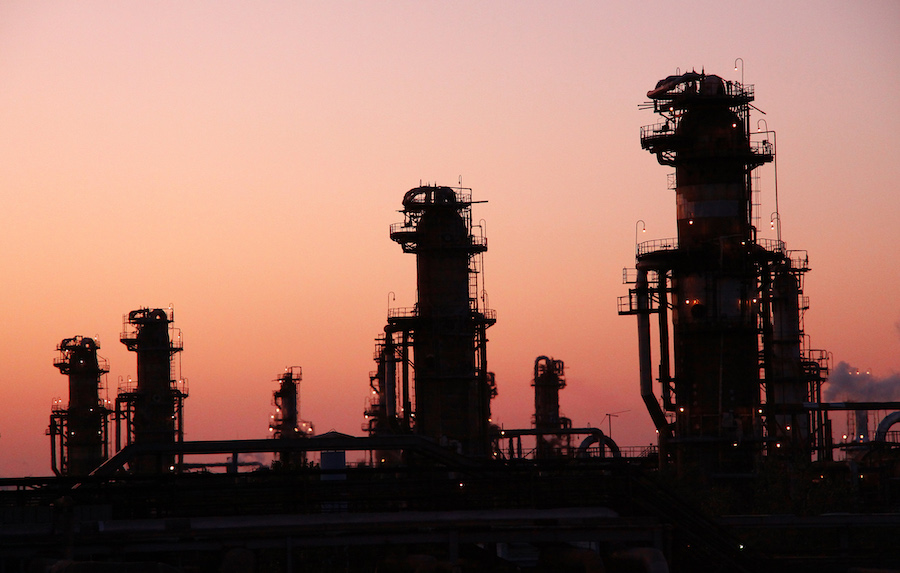Turkmenistan is eager to partner with the United Arab Emirates (UAE) and Russia, to outline best practices for developing the country’s gas and chemical industries amid the worldwide economic downturn caused by the coronavirus pandemic and sharp drop in oil prices.
On May 15, President Gurbanguly Berdimuhamedow ordered state-owned gas company Turkmengaz to sign an agreement with Turkmen Petroleum Products Trade DMCC, a trading arm of Turkmenbashi Oil Processing Complex registered and headquartered in the UAE.
The partnership is expected to increase natural gas production from Dauletabad, an onshore gas field located in Mary province, the southeastern part of the country on the border with Iran.
Together with the Donmez gas field, Dauletabad forms one of the largest gas deposits in Central Asia and has been Turkmenistan’s main supply source for several decades. This giant gas field operated by Turkmengaz maintains a production capacity of 30 billion cubic meters per year, according to a report by Wood Mackenzie, Edinburgh-based research and consultancy group.
Earlier this year, President Berdimuhamedow ordered to develop local oil production and attract foreign investments in the country’s oil and gas industry following a sharp drop in oil prices, which has negatively affected Turkmenistan’s economy.
Turkmenistan today is Central Asia’s third-largest economy, behind Kazakhstan and Uzbekistan, with a population of about 6 million people and a gross domestic product (GDP) of $40.7 billion, of which nearly 25 percent is primarily derived from hydrocarbons, particularly natural gas. The country’s reserves of natural gas are 50 trillion cubic meters, according to the government statistics, while the Organization of the Petroleum Exporting Countries (OPEC) said Turkmenistan’s proved reserves of natural gas were 9.8 trillion cubic meters at the end of 2016.
As of today, China is the largest importer of Turkmen gas. In 2018, Turkmenistan supplied 70 percent of China’s piped gas imports. One year later, in 2019, Ashgabat has resumed gas exports to Russia after a three-year break caused by price issues.
Turkmenistan is also working to develop the country’s chemical industry, and see specialists from Russia as a key to do that.
Russian companies may help Central Asia’s country modernize the Maryazot plant, a facility manufacturing chemical fertilizers. The facility was originally designed to annually produce 450,000 of ammonium nitrate — a chemical compound predominantly used in agriculture as a high-nitrogen fertilizer.
Now Maryazot is not able to produce fertilizers in a pre-defined amount as the equipment at the plant is outdated. Russian investors are expected to provide the plant with new equipment for the production of ammonia, nitric acid, and nitrate. Work at the plant will be carried out at the expense of Russia.
The two countries agreed to cooperate in this realm in 2019 at a meeting of the Intergovernmental Turkmen-Russian Commission on Economic Cooperation.
Last year, state-owned Turkmenkhimiya and Russia’s GIAP group of engineering companies signed a framework agreement to modernize the Maryazot plant. The activities were scheduled for 2020. Specialists from GIAP should carry out a comprehensive technological survey of the production facilities and design a commercial proposal as a result.







 Russian peacekeeping forces, deployed in the Karabakh (Garabagh) region of Azerbaijan since 2020, have commenced their withdrawal from the area.
Russian peacekeeping forces, deployed in the Karabakh (Garabagh) region of Azerbaijan since 2020, have commenced their withdrawal from the area.
 Azerbaijan officially unveiled the logo for the upcoming 29th session of the Conference of the Parties to the United Nations Framework Convention o...
Azerbaijan officially unveiled the logo for the upcoming 29th session of the Conference of the Parties to the United Nations Framework Convention o...
 The Kazakh authorities have increased their arbitration claims against international oil companies involved in the development of the Kashagan oil ...
The Kazakh authorities have increased their arbitration claims against international oil companies involved in the development of the Kashagan oil ...



